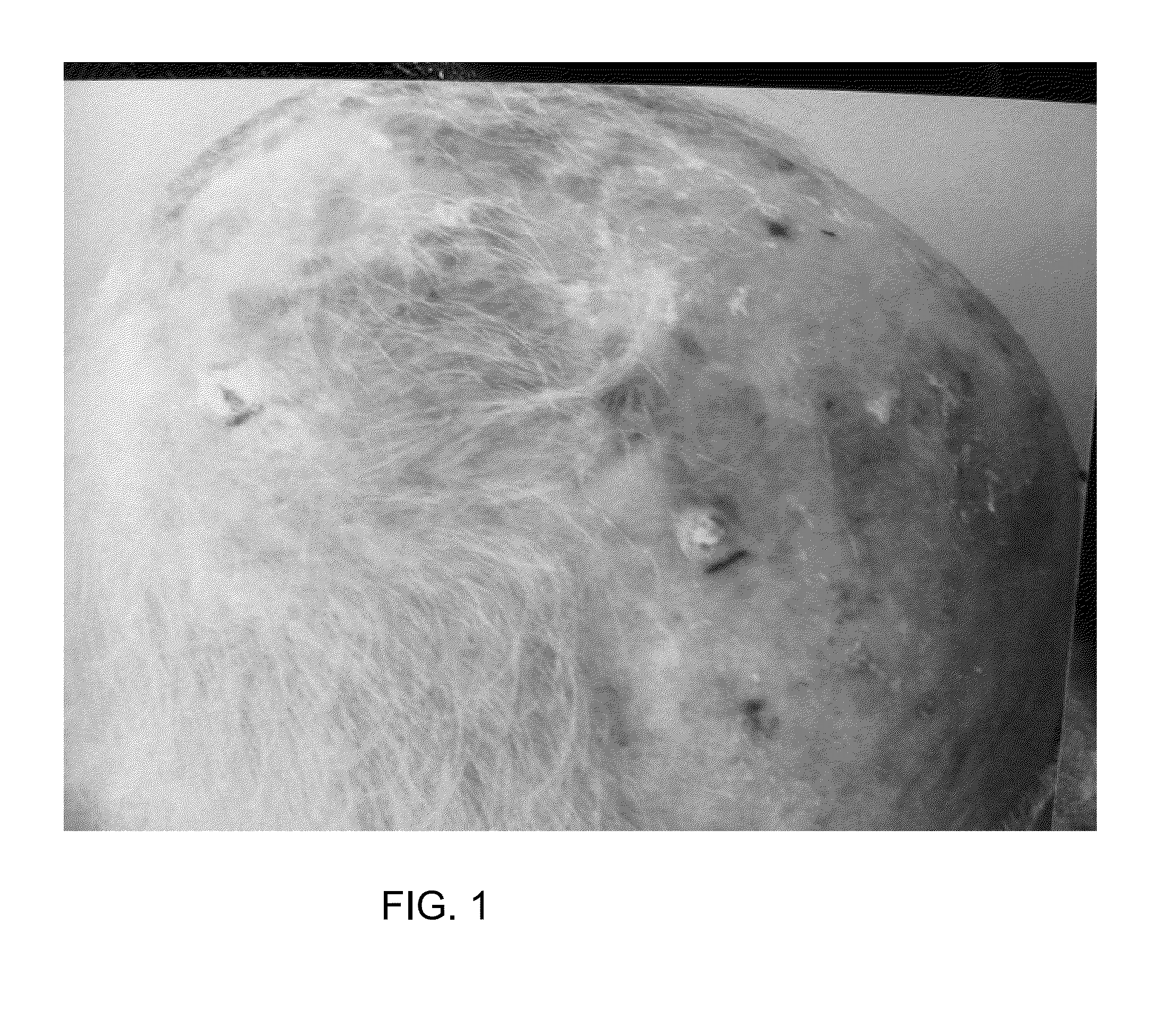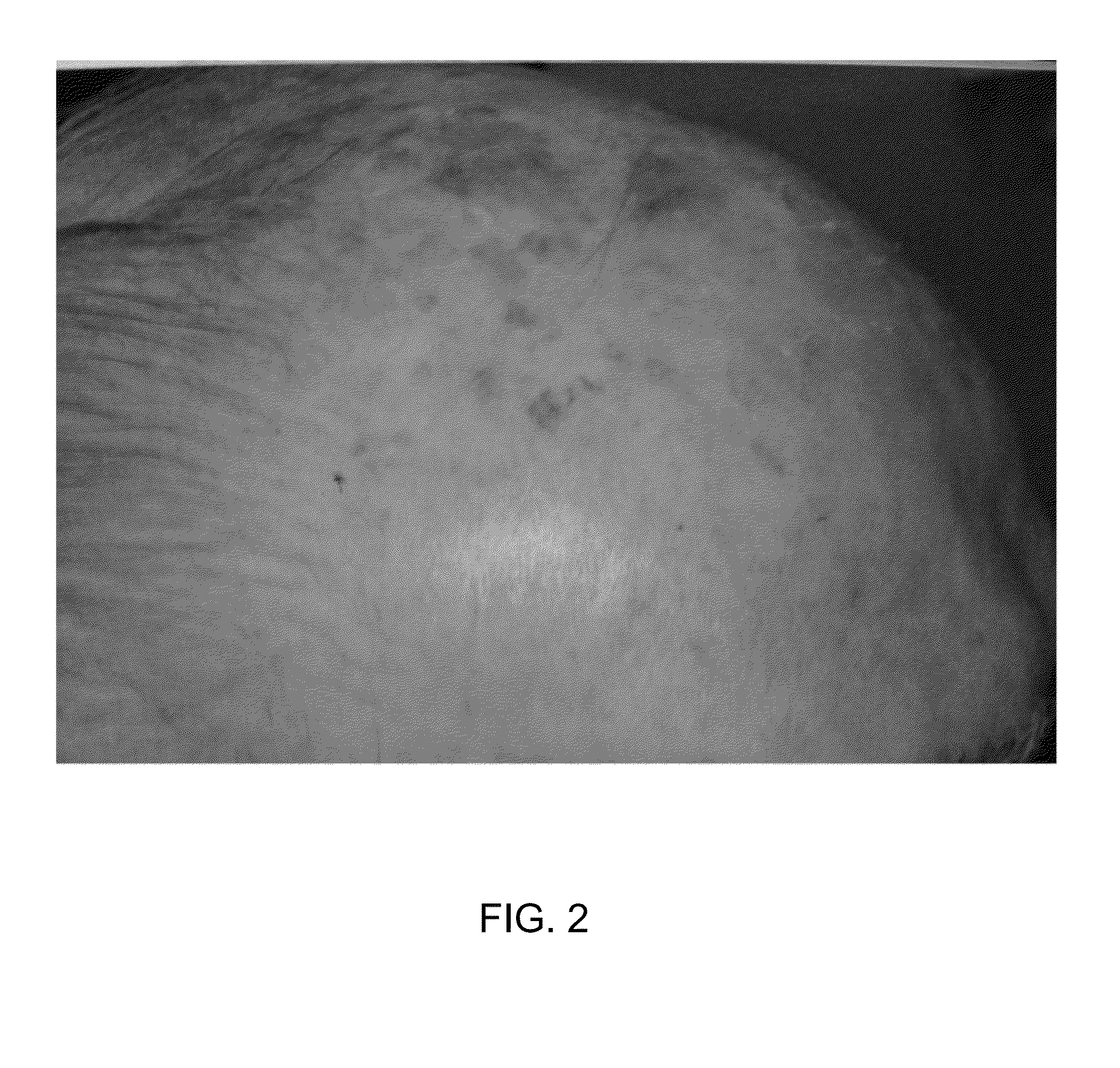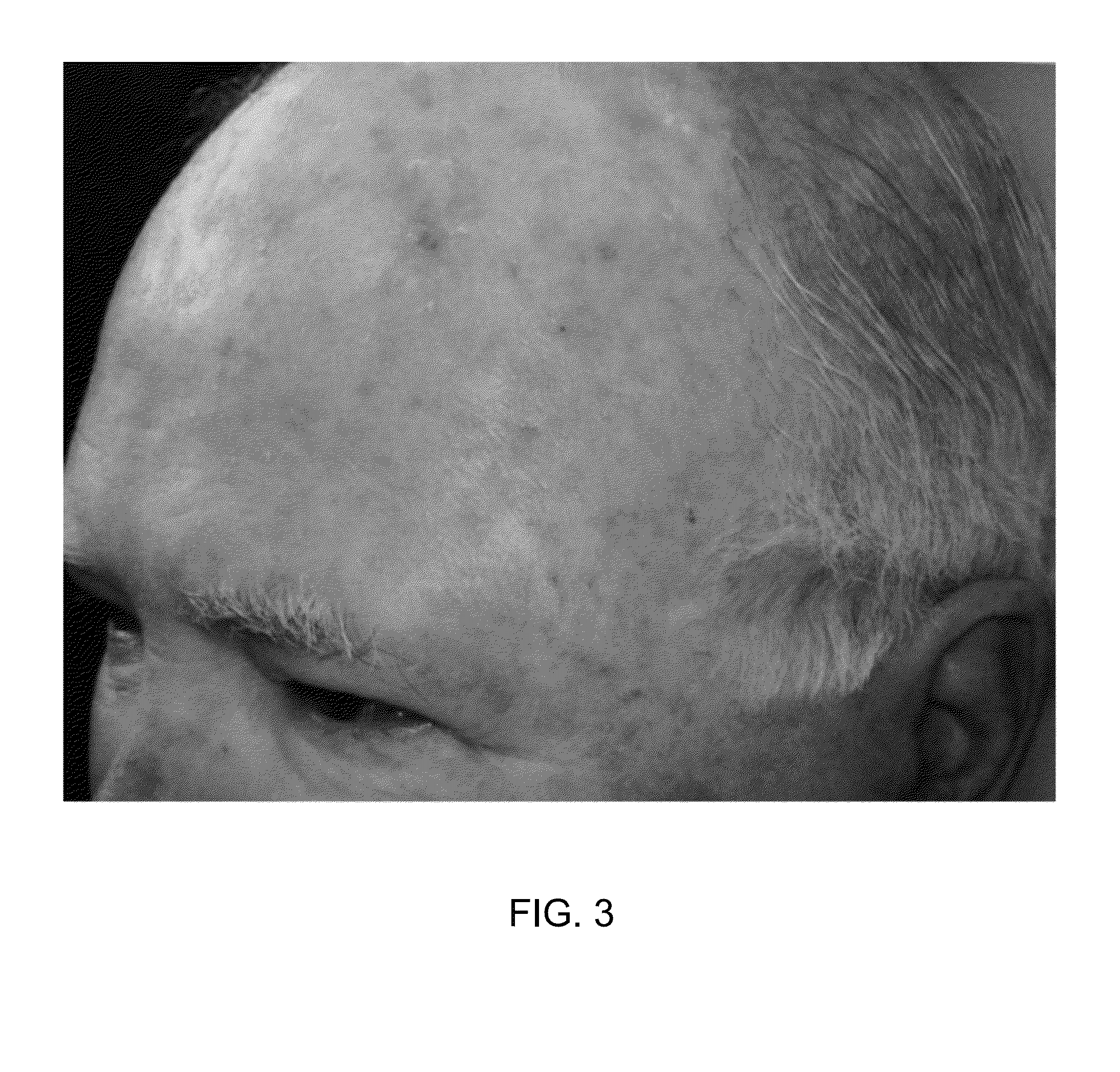Treatments for actinic keratoses
a technology of actinic keratoses and topical compositions, applied in the field of dermatology, can solve the problems of unheard bare chests, unfavorable and ineffective sun light, and achieve the effects of less irritation, improved results, and effective treatment of actinic keratoses
- Summary
- Abstract
- Description
- Claims
- Application Information
AI Technical Summary
Benefits of technology
Problems solved by technology
Method used
Image
Examples
Embodiment Construction
[0020]The following description is provided to enable any person skilled in the art to make and use the invention and sets forth the best modes contemplated by the inventor of carrying out his invention. Various modifications, however, will remain readily apparent to those skilled in the art, since the general principles of the present invention have been defined herein specifically to provide a novel topical composition for the improved treatment of actinic keratoses.
[0021]Ingredients of the Composition
[0022]As detailed below the major active ingredients of the composition are colchicine and an aminoglycoside antibiotic (namely gentamicin) in a dermatologically acceptable cream base. The cream base is an oil-in-water emulsion of lipophilic components including caprylic / capric triglycerides, stearyl alcohol, stearic acid and diisopropyl dimer dilinoleate with glyceryl monosterate, PEG-100 Stearate and PEG-40 Stearate as emulsifiers. Propylene glycol is included as a cosolvent. Alumi...
PUM
| Property | Measurement | Unit |
|---|---|---|
| weight | aaaaa | aaaaa |
| wavelengths | aaaaa | aaaaa |
| chemical | aaaaa | aaaaa |
Abstract
Description
Claims
Application Information
 Login to View More
Login to View More - R&D
- Intellectual Property
- Life Sciences
- Materials
- Tech Scout
- Unparalleled Data Quality
- Higher Quality Content
- 60% Fewer Hallucinations
Browse by: Latest US Patents, China's latest patents, Technical Efficacy Thesaurus, Application Domain, Technology Topic, Popular Technical Reports.
© 2025 PatSnap. All rights reserved.Legal|Privacy policy|Modern Slavery Act Transparency Statement|Sitemap|About US| Contact US: help@patsnap.com



